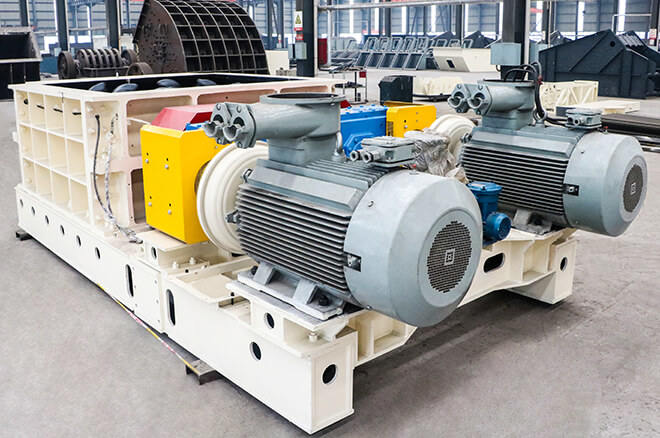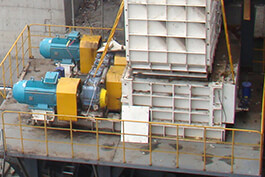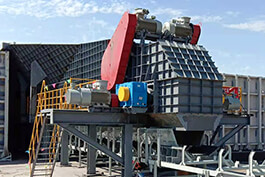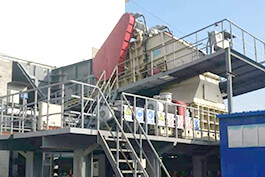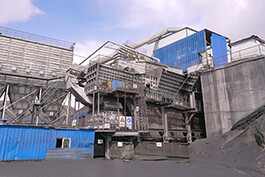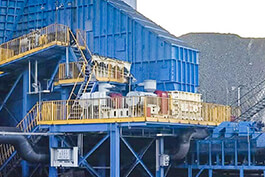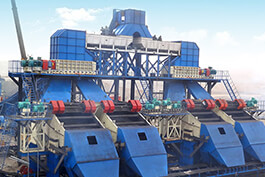Mineral sizers are widely used in mining, electric power and other industries for their advantages of low power consumption, large processing capacity, compact structure, low vibration, uniform discharge particle size and durability. It breaks materials by high torque and low speed transmission system, which drives the left and right crushing rollers to rotate relative or opposite. The screw arranged crushing teeth on the two crushing rollers directly participate in material crushing, and its structural design and quality are closely related to the production capacity and service life of the whole set of equipment. In this paper, the sifter mineral sizers of csgpx-750 type are selected to analyze the normal crushing materials and the non-crushing foreign materials. The force calculation of the crushing teeth is carried out and the strength of the crushing teeth is analyzed by finite element method, which proves that the crushing teeth can be used to crush hard materials such as limestone.
.jpg)
The teeth on the two toothed rollers pass through the crushing chamber in turn, and the bulk material is gripped by the opposite crushing tooth tip. Under the three-point support of the tooth tip on one crushing roll and the tooth back on the other crushing roll, the material is crushed by applying tensile load. In addition, due to the forced discharge function of the
mineral sizers, it is possible to encounter non-broken foreign objects such as iron blocks, which will cause the tooth roll to block. In this extreme case, the roller teeth absorb almost all the kinetic energy of the crushing roller and withstand the huge impact force it brings. It can be seen that the crushing teeth have the following two stress conditions: Normal crushing conditions and tooth roll stuck conditions.
In order to verify whether the crushing strength of the designed tooth plate meets the actual requirements, the finite element analysis software is used to analyze its strength. The stress distribution, strain distribution and displacement distribution of the tooth plate under two working conditions are obtained. Table 2 lists the maximum equivalent stress, maximum equivalent strain and maximum displacement of roll teeth under two working conditions. Figure 3 and figure 4 show the equivalent stress distribution of normal working conditions and stuck working conditions respectively. It can be seen from fig. 3 and fig. 4 that the maximum stress is distributed at the arc of the tooth tip. In addition, the equivalent stress value at the arc transition of the root of the tooth is also significantly higher than the stress value in the adjacent area, indicating that the tooth tip is affected not only by pressure but also by bending moment under the two working conditions. Under the stuck condition, the maximum stress at the tip and root of the tooth is 2324mpa, far exceeding the yield limit of the material, and the stress at the rest of the tooth is below 387mpa, lower than the yield limit of the material.
(1) When the mineral sizers roll teeth are stuck, the tip part of the teeth will bear a huge impact force. Therefore, when designing mineral sizers, it is necessary to consider the use of iron removal equipment, and the need to be equipped with special hydraulic coupler and electrical equipment to protect the roller teeth from damage;
(2) Under normal crushing conditions, the maximum stress value of the roller teeth is less than the yield limit of the material, and the compressive strength of limestone and other ores is generally. 150mpa, so the roller teeth can be used to break hard materials such as limestone;
(3) In actual production, tip wear is the main failure form of the tooth plate. The
mineral sizers have identical tooth plates on the left and right crushing rollers. After partial wear of the tooth plates, they can be exchanged at will, which not only improves their service life, but also makes installation and replacement easy and flexible.


.jpg)
